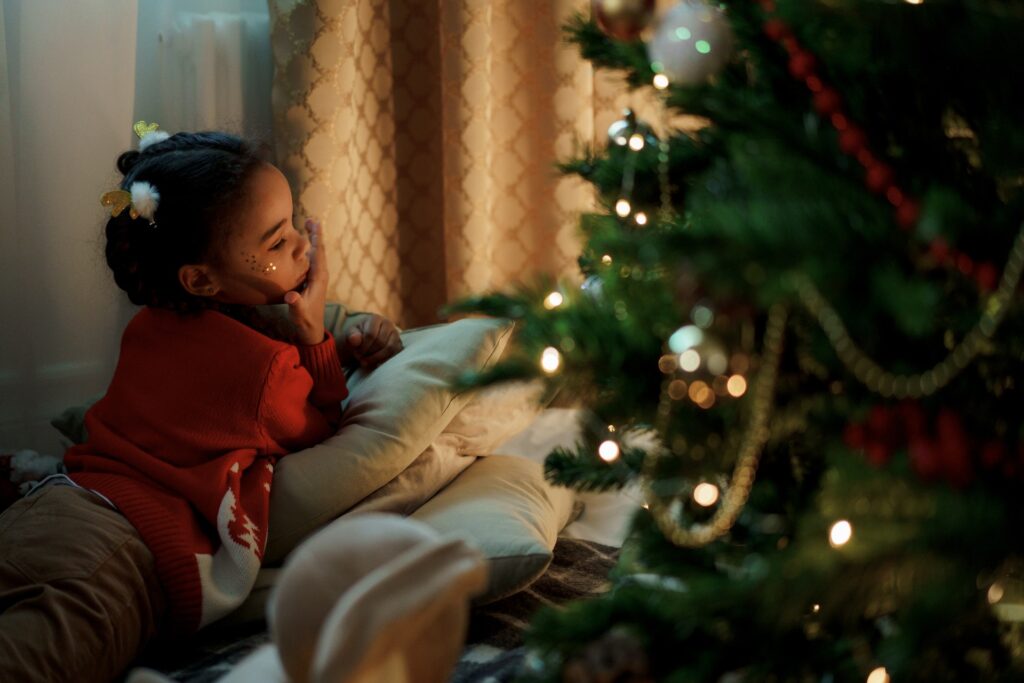Choosing the best Christmas tree for your family is as important as finding the best turkey for Thanksgiving. After all, it will be a valued guest in your home for at least a couple of weeks, and you want it to be distinguished, elegant, and healthy. Some families choose to make a day out of traveling to the country and walking through snow-covered fields just to find the tree that speaks to them. Other families are equally content to travel to a tree farm and choose one that is pre-cut. Either way, there are guidelines to follow in finding the best tree for you.
Since late November and early December are prime time to engage in this cherished family tradition, it’s possible that you’ll run into busy and weather-altered roadways. The holiday season, being fully entrenched at the start of winter, can set drivers up for some scary and challenging road conditions. In this hectic time of year, you should be prepared by reviewing your car insurance policy and choosing the best cheap car insurance for you.
Types of Christmas Trees
The variety of trees you will discover on your trek to the countryside or tree farm will largely depend on what grows in your region naturally. The United States is home to 16 different species of Christmas trees.
- In the Northeast, the classic and least expensive Christmas tree is the balsam fir. It’s highly aromatic, retains its needles well, and boasts a deep green color, making it a favorite for many families.
- Between North Carolina and Texas, the Arizona cypress is the tree of choice. It has soft needles that exude a minty lemon fragrance and has more of a greenish blue color.
- In the South, the favorite and least expensive choice is the Virginia pine. It has a heady, classic pine scent and a very straight trunk, making it easy to stand. It’s also quite sticky, as it has an abundance of natural resin.
- In the mid-Atlantic, families tend to opt for the eastern white pine. It has long, flexible needles that are gentle (so it’s safe and easy around children) and its fragrance is more subtle than the other trees.
- The Midwest prefers the Scotch pine, with hair-like soft needles that have a long lasting, peaceful pine aroma.
- Those in the Southwest tend to go for the Monterey pine. It has a bushy appearance and is deep green with medium-length needles.
- Rocky Mountain and point’s west folk prefer the Colorado blue spruce. It has a very full, rounded pyramid shape, with a silvery bluish color and fragrant needles.
Picking a Christmas Tree
So, how do you know that the tree before you is healthy enough to bring home to be the centerpiece of the Christmas holidays?
- Perform the needle test. Grab any of the tree’s branches between your forefinger and thumb, then clamp down and pull the branch toward you. The tree is past its prime if your hand is now full of needles. There’s no way it will stay lively and lovely for you over the holiday season.
- Perform the smell test. Take a few needles in your hand and crush them. Can you smell the pine scent? If you can’t or if it’s very subtle, don’t make the purchase, especially if you want your house to smell like Christmas.
- Perform the bounce test. Hold the tree just a few inches above the ground. Drop it. Do the needles stay put or are there exterior needles falling off? Interior needles falling off are normal, but if there are many exterior ones falling off, move to the next tree.
- Perform the tree stand test beforehand. Measure twice, cut once, and save Christmas in the process. If the tree’s trunk won’t fit into your stand, trimming the bark away to make it fit will kill the tree prematurely. You’ll be stripping off the cambium layer, and eliminating the tree’s ability to absorb necessary water.
- Perform the scent and sight test. Does the tree smell musty? Are there any strange spots on the tree? This could be a sign of decay or sickness. If there’s a question, move on to the next.
- Make space ahead of time. Figure out where you’d like to place your tree. Whatever room you choose, clear it out and clean the area before heading out to make your tree purchase. Be sure to know the maximum height of your room to correspond correctly with the maximum height of your tree.
Picking the ideal Christmas tree is an annual family tradition for many households. Knowing what species to choose, what’s available, and how to determine if it is healthy are key factors to keep in mind to ensure a fun, festive holiday season.

